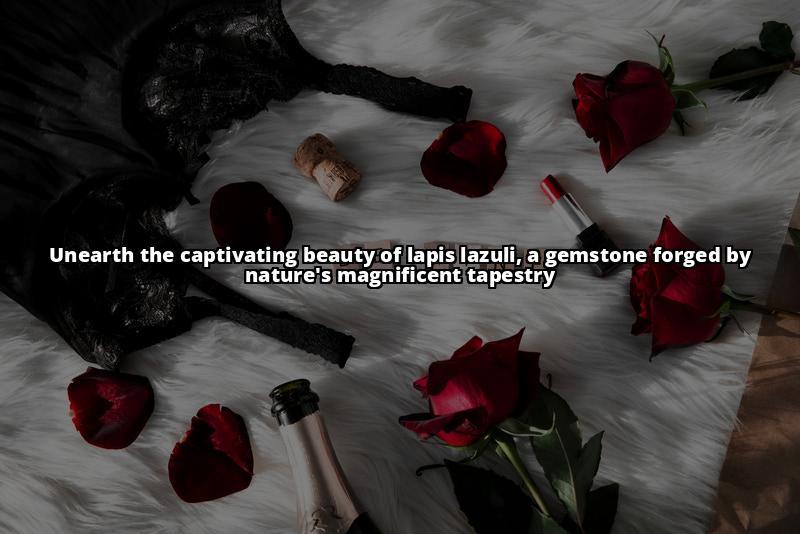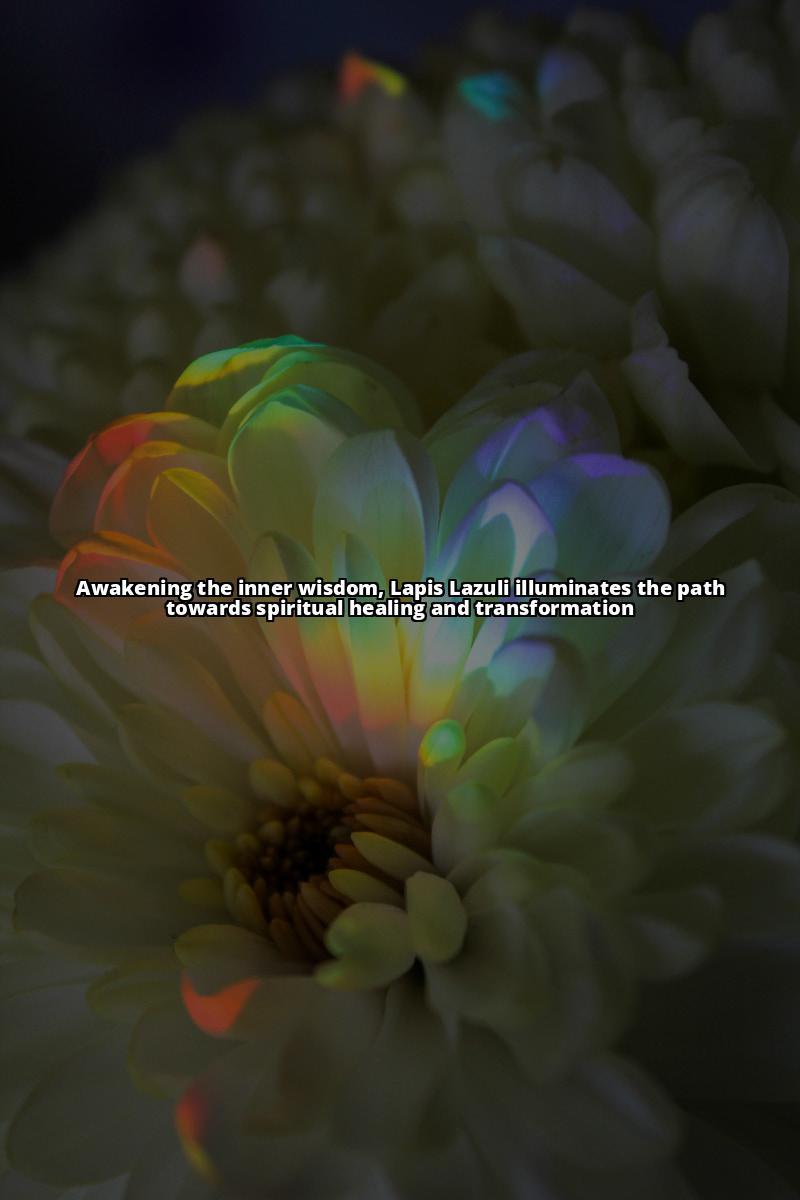What you will learn about lapis lazuli gemstone:
- The origins and mining process of lapis lazuli, including its primary sources and unique properties.
- The historical and cultural significance of lapis lazuli in ancient civilizations and its uses in art, jewelry, and religious rituals.
- The healing properties and spiritual meaning associated with lapis lazuli, as well as its uses in modern applications, market, and popular culture.
Lapis lazuli, a deep-blue gemstone with a rich history and cultural significance, has captivated the human imagination for centuries. This metamorphic rock, also known as “lapis” for short, has been used as a semi-precious stone since ancient times. Its vibrant blue color, often flecked with golden pyrite inclusions, has made it highly sought after for various purposes, from art and jewelry to spiritual practices.
In this article, we will delve into the origins and mining of lapis lazuli, explore its cultural and historical significance, uncover its healing properties and spiritual meaning, discuss its uses in jewelry and decorative items, examine its modern applications and market, and even touch upon its presence in literature, symbolism, and pop culture. By the end, you will gain a deeper appreciation for the enigmatic beauty of lapis lazuli and its enduring allure in different aspects of human life.

Origins and Mining
Lapis lazuli primarily originates from Afghanistan, specifically the mines in the Sar-e-Sang district of Badakhshan province. These mines have been the main source of lapis lazuli for centuries, with evidence of mining dating back to at least 700 BC. The unique geological conditions in this region have created the perfect environment for the formation of lapis lazuli.
Lapis lazuli is a rock formed through contact metamorphism, which occurs when rocks are subjected to heat and pressure deep within the Earth’s crust. It is composed of several minerals, the most important of which is lazurite. Lazurite is responsible for the gemstone’s intense blue color and is typically found in combination with other minerals such as sodalite, calcite, and pyrite.
The mining process for lapis lazuli is labor-intensive and requires skilled miners who carefully extract the gemstone from the surrounding rock. Once the lapis lazuli is mined, it is then sorted, cut, and polished to enhance its natural beauty. However, mining lapis lazuli can be challenging due to its occurrence in remote and mountainous regions, as well as the potential risks associated with working in underground mines.
| Ancient Civilizations | Significance |
|---|---|
| Indus Valley Civilization | Used for decorative purposes |
| Ancient Egypt | Associated with the sky and the heavens, believed to bring protection and good fortune to pharaohs and gods |
| Renaissance and Baroque periods | Used as a pigment for paintings, symbolized wealth and status |
| Tutankhamun’s funeral mask | Featured intricate inlays of lapis lazuli, symbolized reverence for the gemstone and its association with the afterlife |

Cultural and Historical Significance
Lapis lazuli holds great cultural and historical significance, having been treasured by ancient civilizations for thousands of years. One of the earliest known uses of lapis lazuli can be traced back to the Indus Valley Civilization, where it was used for decorative purposes. In ancient Egypt, lapis lazuli was associated with the sky and the heavens, and it was believed to bring protection and good fortune to the pharaohs and the gods.
The rich blue color of lapis lazuli made it a highly prized material for artists during the Renaissance and Baroque periods. It was ground into a fine powder to create the pigment known as ultramarine, which was used by renowned painters such as Vermeer. Lapis lazuli was also used in the creation of magnificent sculptures and ornamental objects, making it a symbol of wealth and status.
One of the most famous examples of lapis lazuli in art is the funeral mask of Tutankhamun, which features intricate inlays of the gemstone. This masterpiece exemplifies the reverence ancient civilizations had for lapis lazuli and its association with the afterlife. Even today, lapis lazuli continues to be used in art and jewelry, carrying with it the echoes of its storied past.

Healing Properties and Spiritual Meaning
Beyond its aesthetic appeal, lapis lazuli has been highly regarded for its healing properties and spiritual significance. It was believed to possess various metaphysical qualities that could benefit the mind, body, and spirit. Throughout history, lapis lazuli has been used by healers, priests, and royalty for its power, wisdom, and ability to stimulate psychic abilities.
In ancient Egypt, lapis lazuli was associated with the goddess Maat, who represented truth and justice. It was believed to purify the soul and heal the mind. The ancient Egyptians even went so far as to drill holes in the skulls of the deceased and insert a mixture of lapis lazuli and gold, as they believed it could aid in the transition to the afterlife.
King Solomon, known for his wisdom, was said to have used a Lapis Lazuli ring to control demons and construct his temple. The gemstone was believed to enhance one’s intuition and spiritual insight. Lapis lazuli was also associated with measuring time and life span, symbolizing the eternal nature of the universe.

Uses in Jewelry and Decorative Items
Lapis lazuli’s striking blue color and unique properties make it a popular choice for jewelry and decorative items. The gemstone is often cut and polished into various shapes, including cabochons, beads, and inlays, to showcase its intense blue hue. Lapis lazuli necklaces, bracelets, earrings, and rings are highly sought after by those who appreciate its beauty and symbolism.
In jewelry design, lapis lazuli is often paired with other gemstones or precious metals to create visually stunning pieces. Its deep blue color can complement both silver and gold settings, adding a touch of elegance and sophistication. Lapis lazuli jewelry is not only fashionable but also carries with it the rich history and spiritual significance associated with the gemstone.
When wearing lapis lazuli jewelry, it is essential to handle it with care. The gemstone has a Mohs hardness of 5 to 6, which means it is relatively soft and can be easily scratched or damaged. To maintain its luster and beauty, it is recommended to store lapis lazuli jewelry separately and avoid exposing it to harsh chemicals or extreme temperatures.
Modern Applications and Market
In addition to its use in jewelry, lapis lazuli has found its way into various modern applications. The gemstone is often incorporated into home decor, sculptures, and objets d’art. Its vibrant blue color adds a touch of luxury and sophistication to any space, whether it’s a decorative vase, a tabletop accessory, or a statement piece of art.
The market for lapis lazuli continues to thrive, with a demand for its unique beauty and historical significance. However, due to the limited availability of high-quality lapis lazuli, prices can vary significantly. The finest specimens with intense blue color and minimal inclusions command higher prices in the market.
It is worth noting that not all lapis lazuli in the market is natural. Some products may be artificially colored jasper from Germany, which is less valuable. It is important for buyers to be aware of this and to purchase from reputable sources to ensure they are getting genuine lapis lazuli.

Lapis Lazuli in Literature, Symbolism, and Pop Culture
Lapis lazuli has made its mark in literature, symbolism, and pop culture, often representing deep wisdom, spiritual awakening, and inner truth. The gemstone has been mentioned in ancient texts and folklore, where it is associated with mystical powers and divine knowledge.
In J.R.R. Tolkien’s fantasy novel “The Lord of the Rings,” lapis lazuli is referenced as “the star-glass,” a precious stone that emits a bright light. This symbolizes the illumination of wisdom and the quest for truth. Lapis lazuli has also been featured in various movies, TV shows, and music, further cementing its place in popular culture.
Personal Story: Uncovering the Mysteries of Lapis Lazuli
As a gemstone enthusiast and collector, I have always been drawn to the beauty and allure of lapis lazuli. One particular piece in my collection holds a special place in my heart – a stunning lapis lazuli pendant that I acquired during my travels in Afghanistan.
During my visit to the famous lapis lazuli mines in the Badakhshan region, I had the opportunity to witness firsthand the challenging process of mining this precious gemstone. The miners, equipped with rudimentary tools and sheer determination, worked tirelessly to extract the lapis lazuli from deep within the earth. It was a physically demanding task, as they dug through layers of rock and soil, hoping to strike the vibrant blue veins of lazurite.
As I held the pendant in my hand, I couldn’t help but marvel at the rich history and cultural significance of lapis lazuli. From ancient civilizations to Renaissance Europe, this gemstone has been treasured for centuries. It was used to create magnificent artworks, adorn royal jewelry, and even symbolize spirituality and protection.
Beyond its aesthetic appeal, lapis lazuli is believed to possess healing properties and spiritual meaning. Throughout history, healers and spiritual practitioners have utilized lapis lazuli to stimulate the mind, enhance psychic abilities, and promote emotional healing. Personally, I have found solace and clarity when meditating with my lapis lazuli pendant, as it seems to open up a channel of intuition and inner wisdom.
In the world of jewelry and decorative items, lapis lazuli continues to captivate designers and consumers alike. Its deep blue color, often speckled with golden pyrite, makes it a sought-after gemstone for necklaces, bracelets, and rings. The versatility of lapis lazuli is evident in the wide variety of cuts and shapes it is fashioned into, from smooth cabochons to intricate inlays.
As I continue to explore the world of gemstones, lapis lazuli remains a favorite in my collection. Its enigmatic beauty, rich history, and potential for spiritual and emotional healing make it a truly remarkable gemstone. I encourage fellow gemstone enthusiasts and those seeking a touch of mystique in their lives to discover the enduring allure of lapis lazuli.
Lapis Lazuli in Alternative Therapies and Metaphysical Properties
Lapis lazuli continues to be valued in alternative therapies and metaphysical practices. It is believed to have a calming effect on the mind and to enhance spiritual growth. Lapis lazuli is often used in crystal healing to stimulate the third eye chakra, which is associated with intuition and insight.
Practitioners of energy work and meditation may use lapis lazuli to enhance their spiritual connection and expand their consciousness. The gemstone is believed to promote self-expression, clarity, and inner peace. Whether worn as jewelry, held during meditation, or placed in living spaces, lapis lazuli is seen as a tool for personal transformation and spiritual awakening.
Conclusion
In conclusion, lapis lazuli is a gemstone that has fascinated humanity for thousands of years. Its deep-blue color, cultural significance, and spiritual properties have made it a sought-after gemstone for various purposes. From its origins in the mines of Afghanistan to its use in art, jewelry, and alternative therapies, lapis lazuli continues to captivate us with its enigmatic beauty.
As you explore the world of lapis lazuli, remember to appreciate the rich history and symbolism associated with this gemstone. Whether you wear it as jewelry, display it in your home, or use it in alternative therapies, lapis lazuli offers a connection to ancient traditions and a glimpse into the mysteries of the universe. Allow its beauty and energy to inspire and uplift you on your journey of self-discovery and spiritual awakening.
Common Questions
What is lapis lazuli?
Lapis lazuli is a deep blue gemstone prized for its vibrant color.
Who can wear lapis lazuli?
Anyone can wear lapis lazuli, it suits both men and women.
What are the healing properties of lapis lazuli?
Lapis lazuli is believed to enhance communication and bring inner peace.
How should lapis lazuli be cleaned?
Clean lapis lazuli with a soft cloth and mild soapy water.
What makes lapis lazuli valuable?
The rarity of its deep blue color and historical significance.
Isn’t lapis lazuli too expensive?
While lapis lazuli can be pricey, there are affordable options available.






